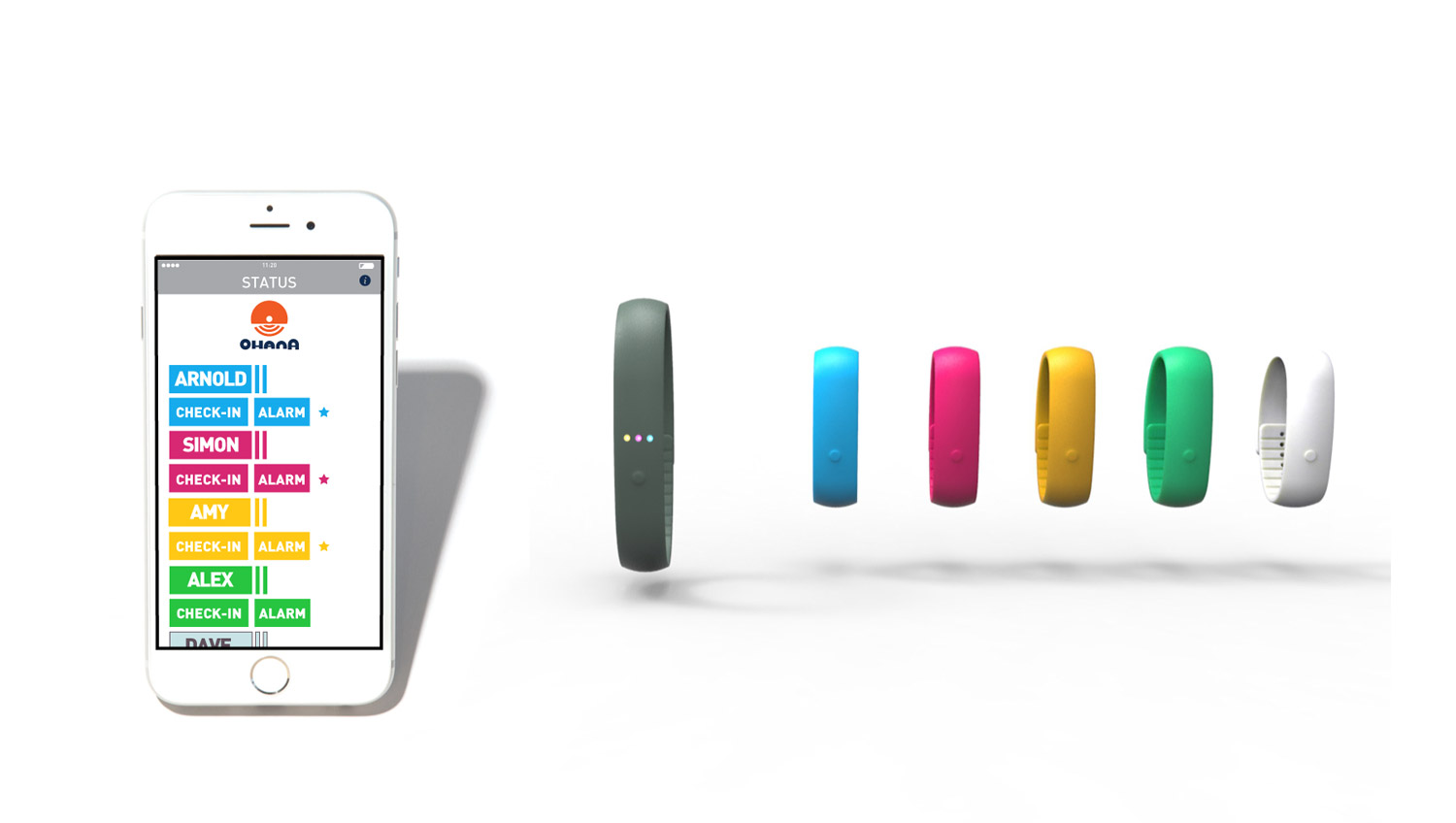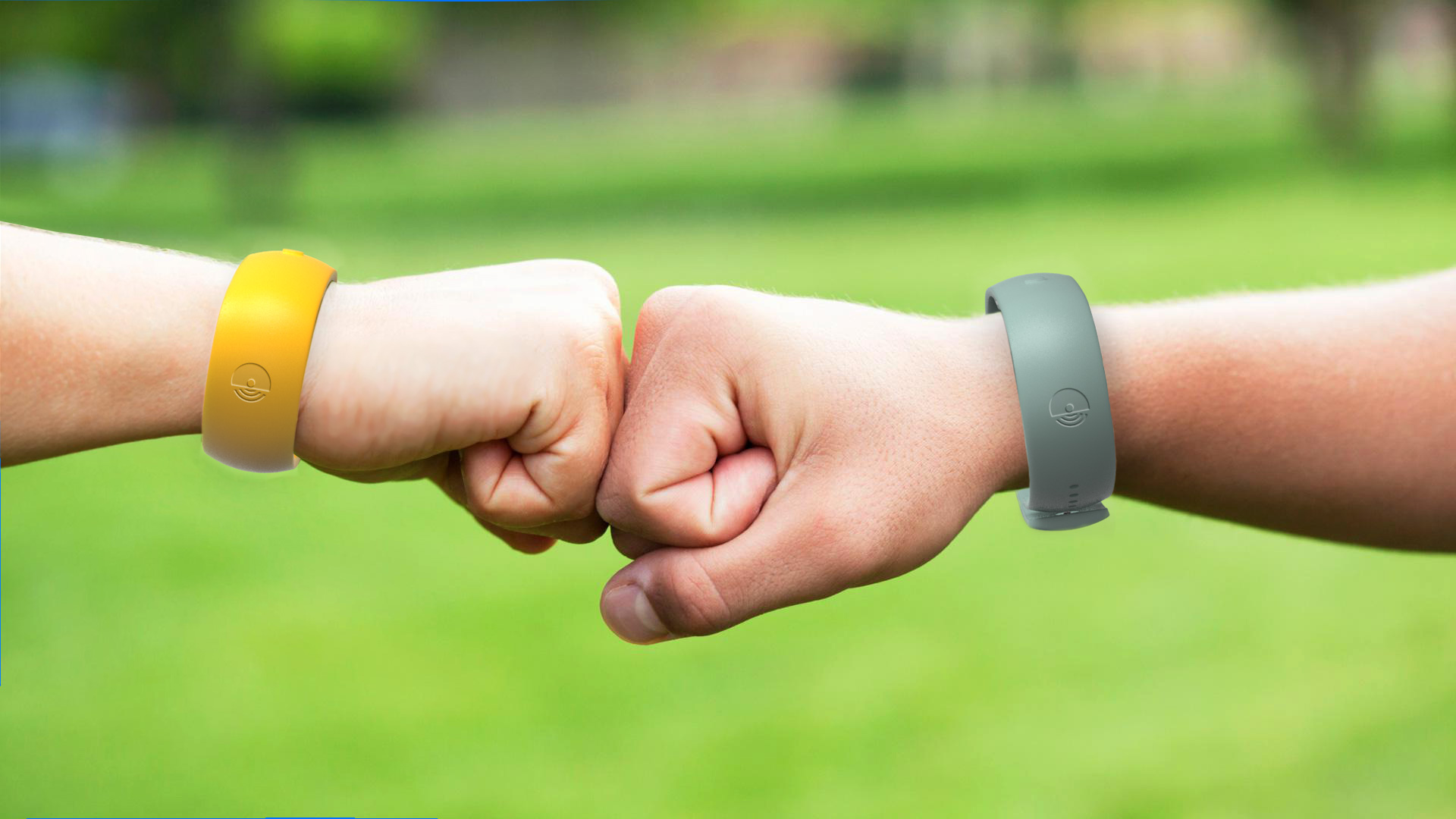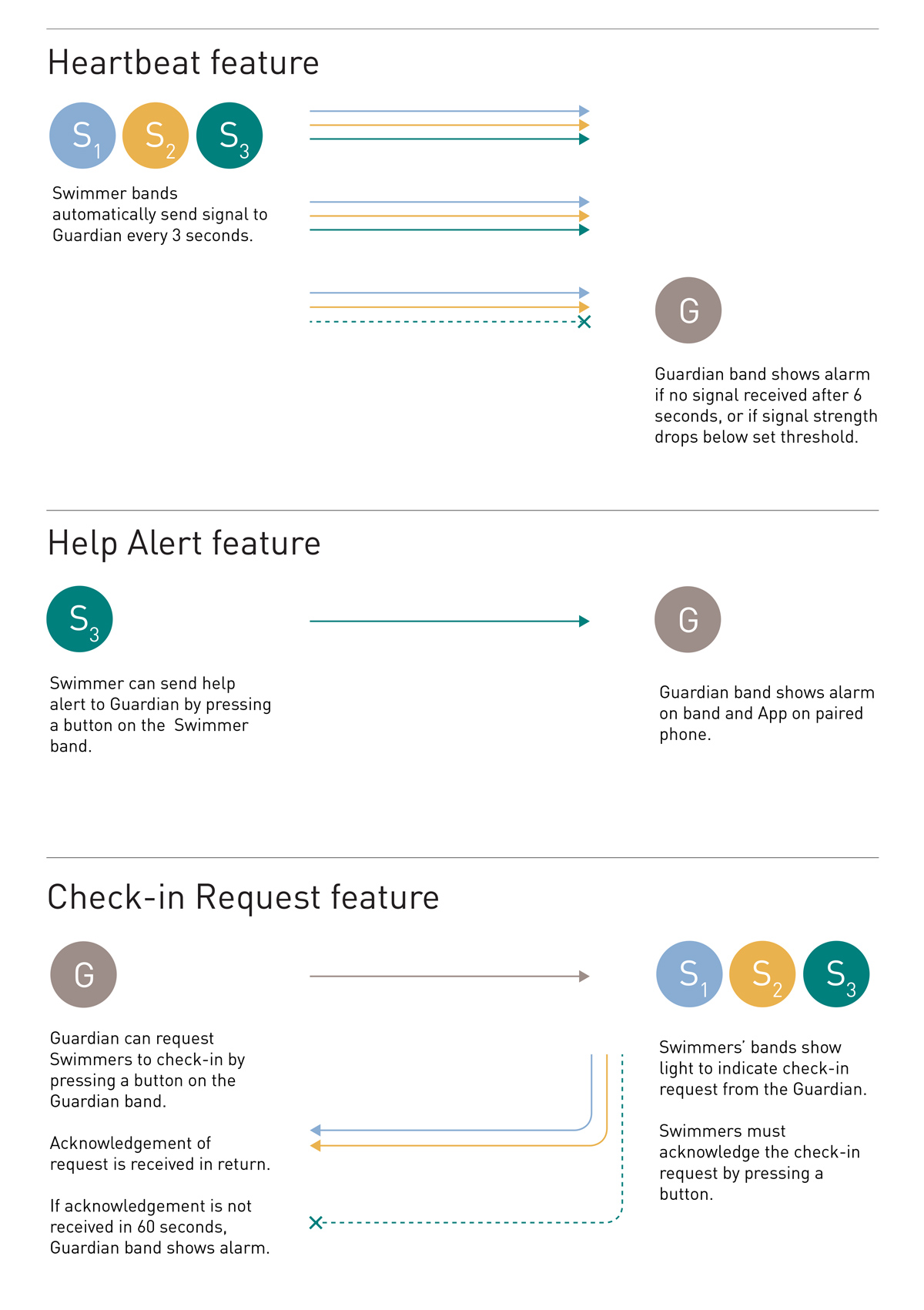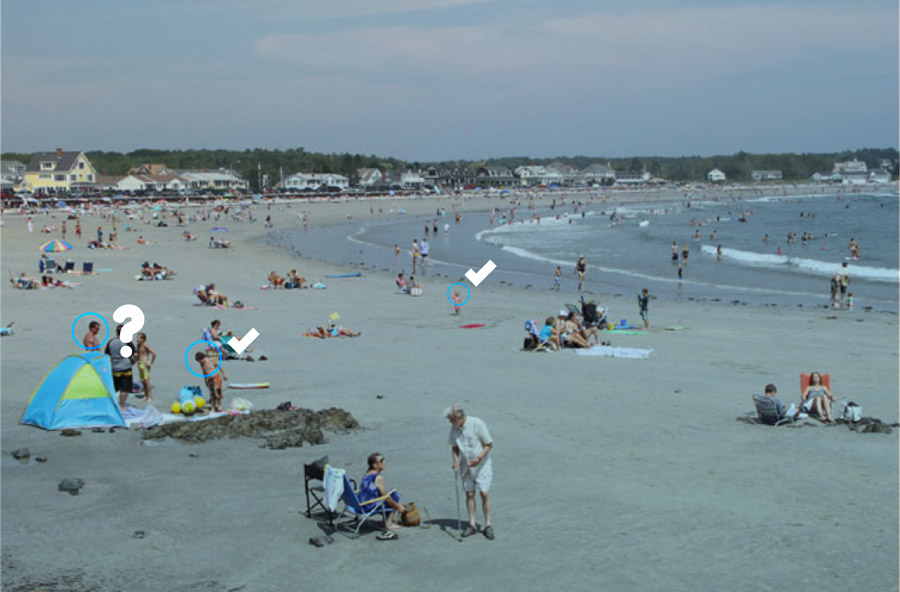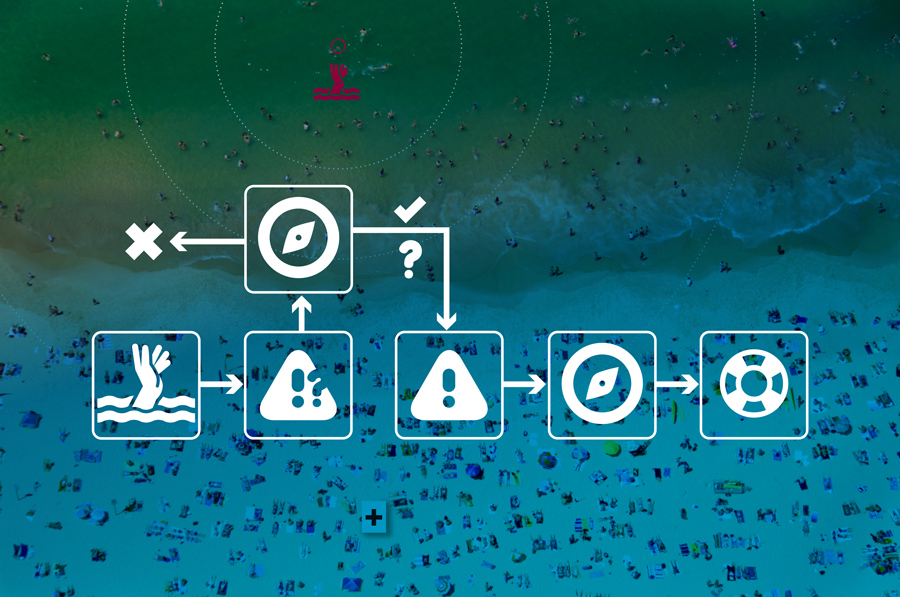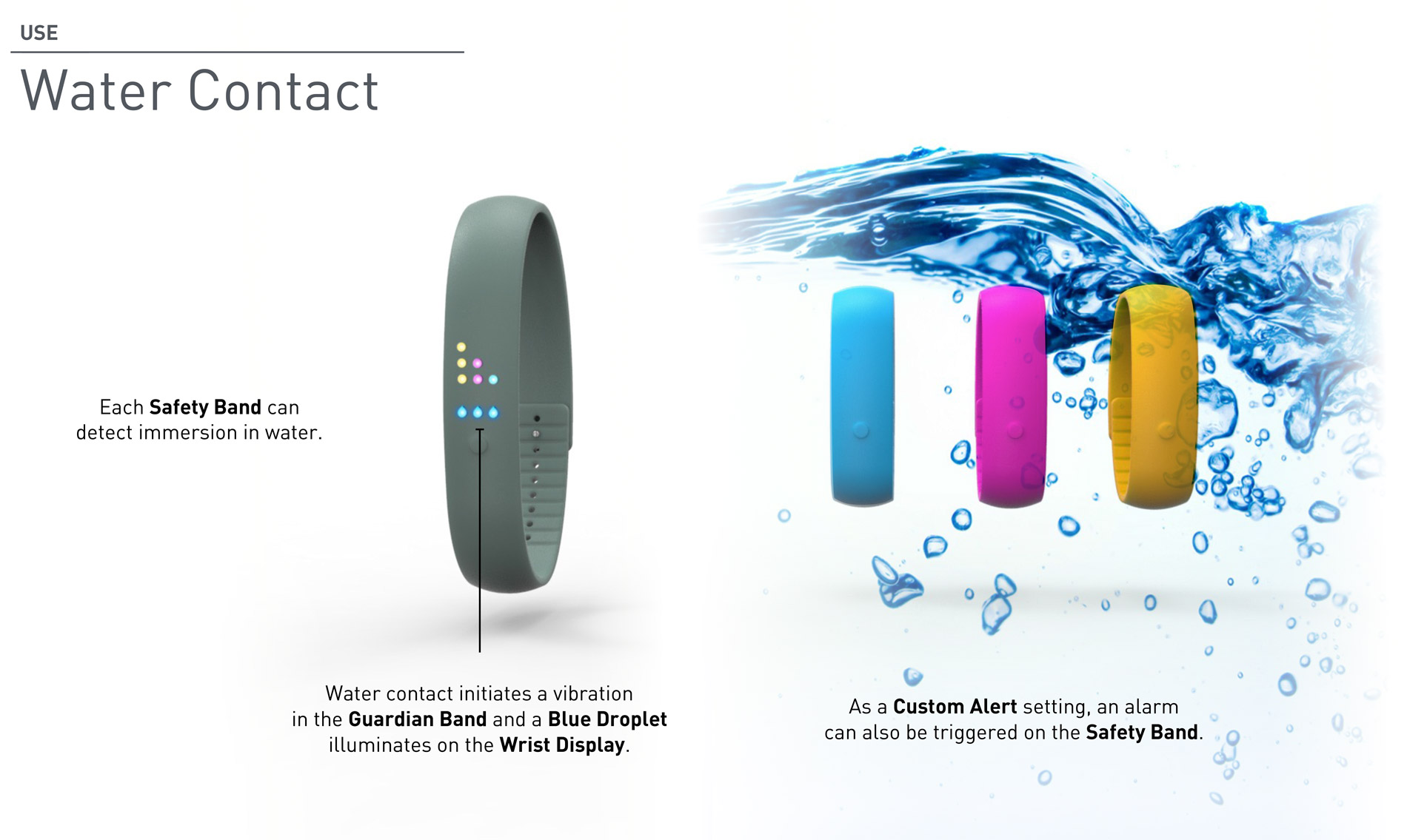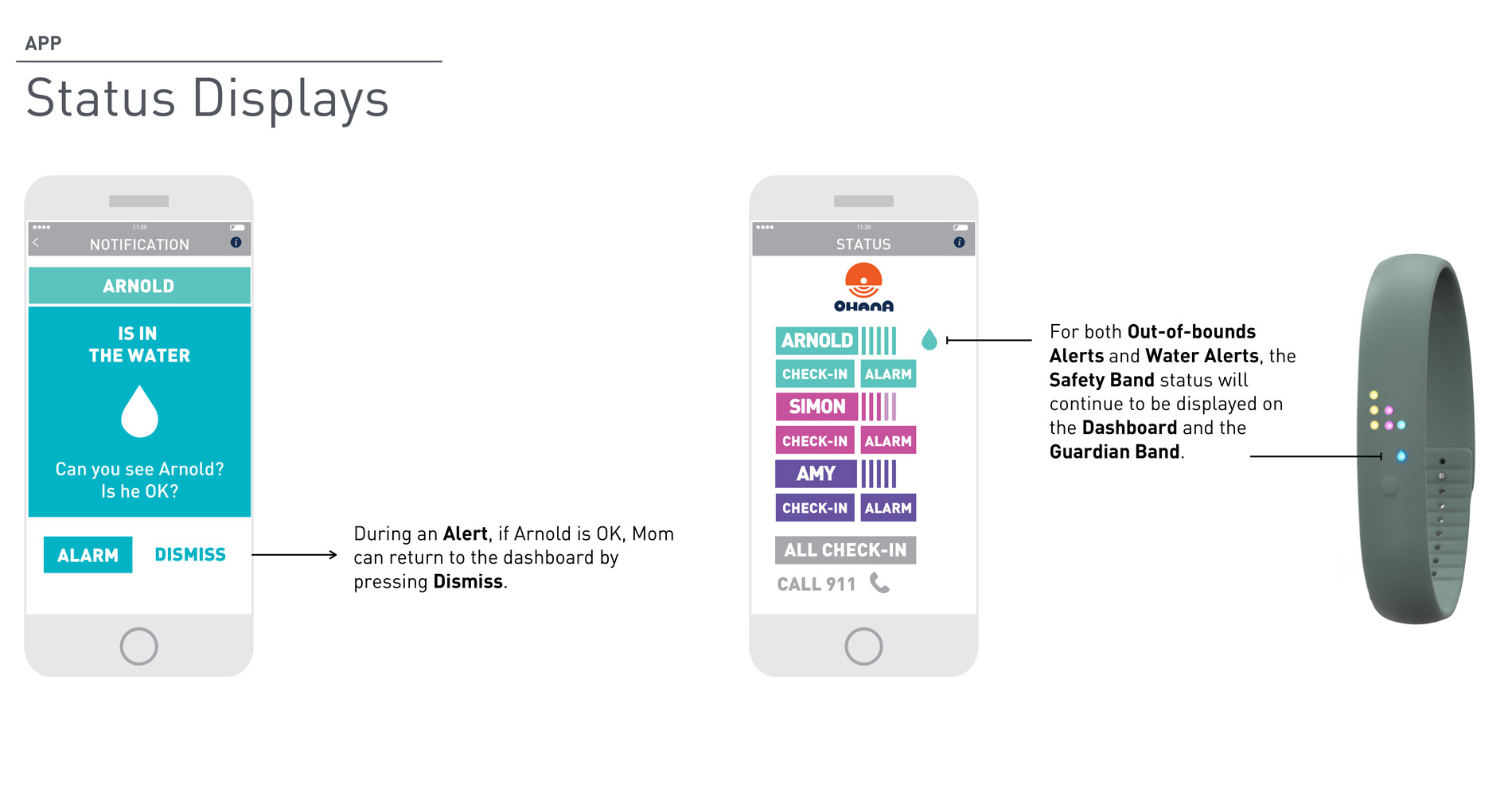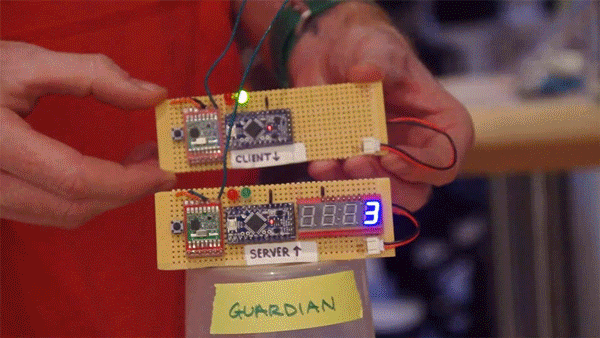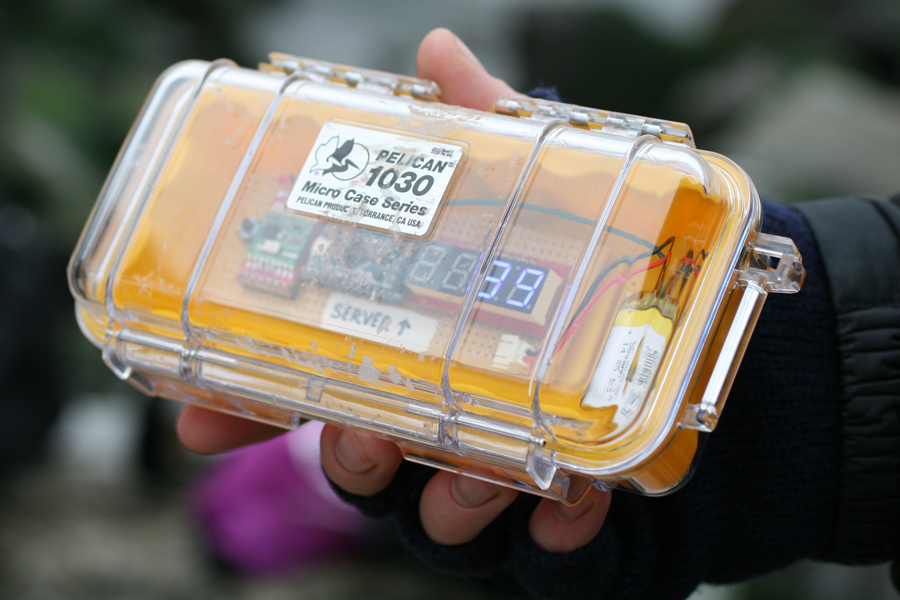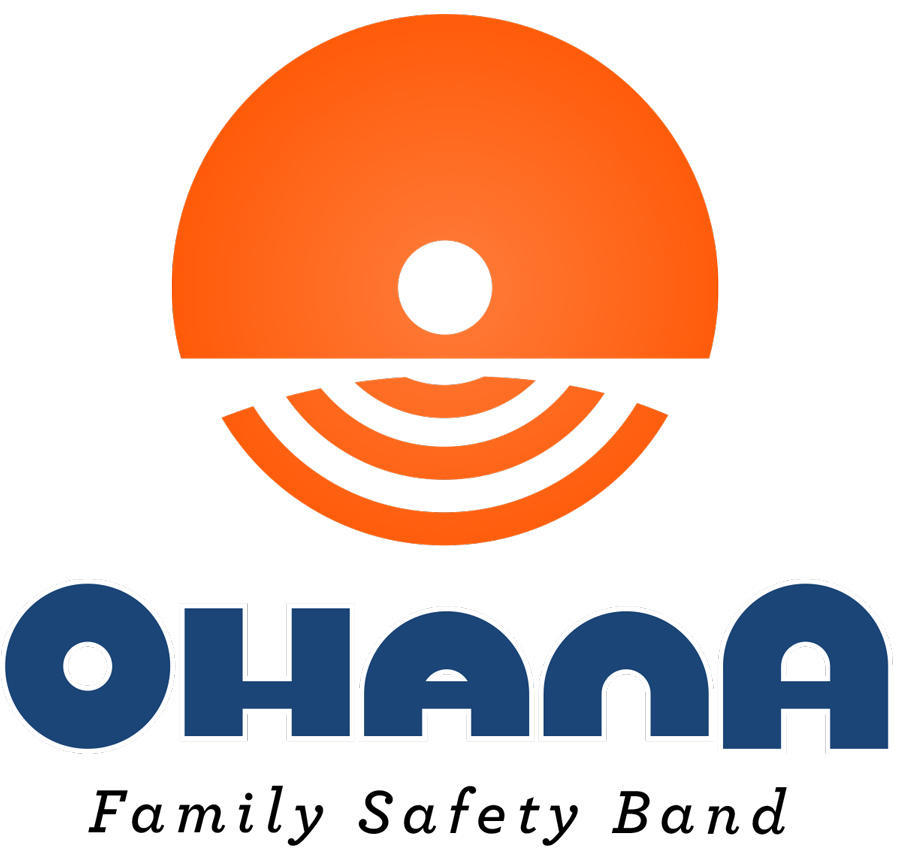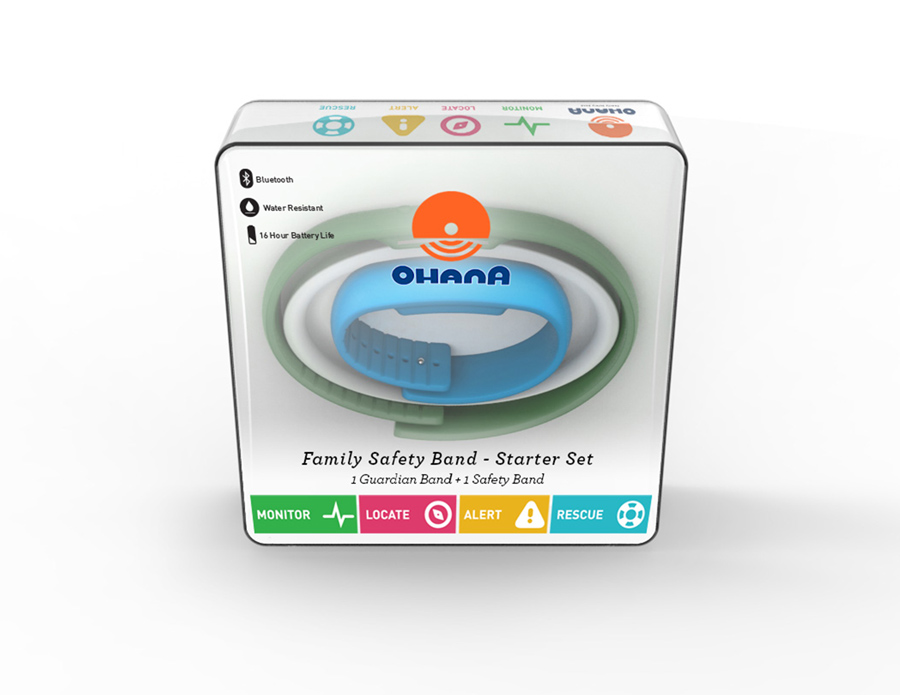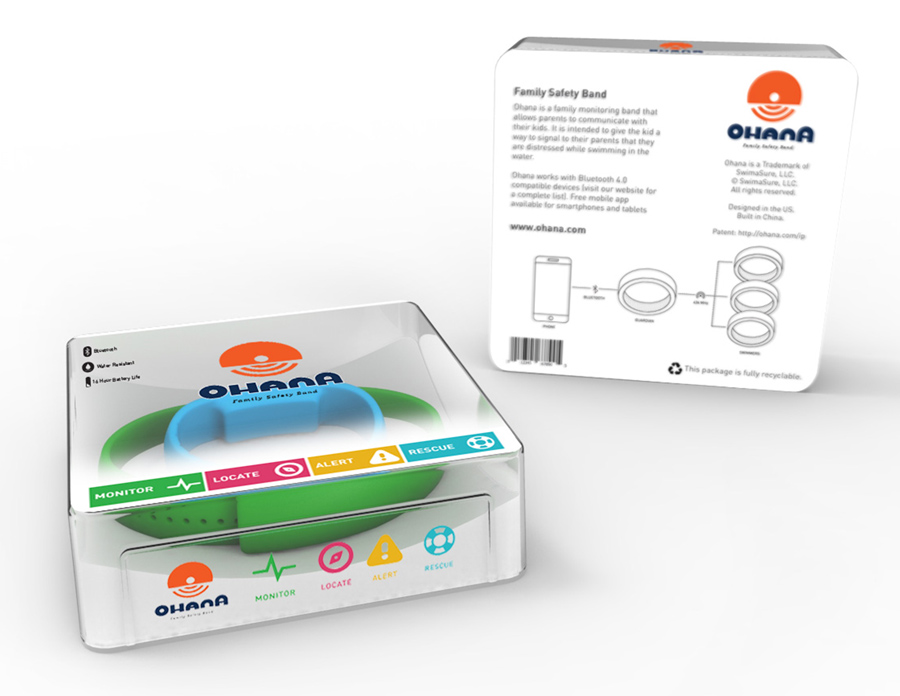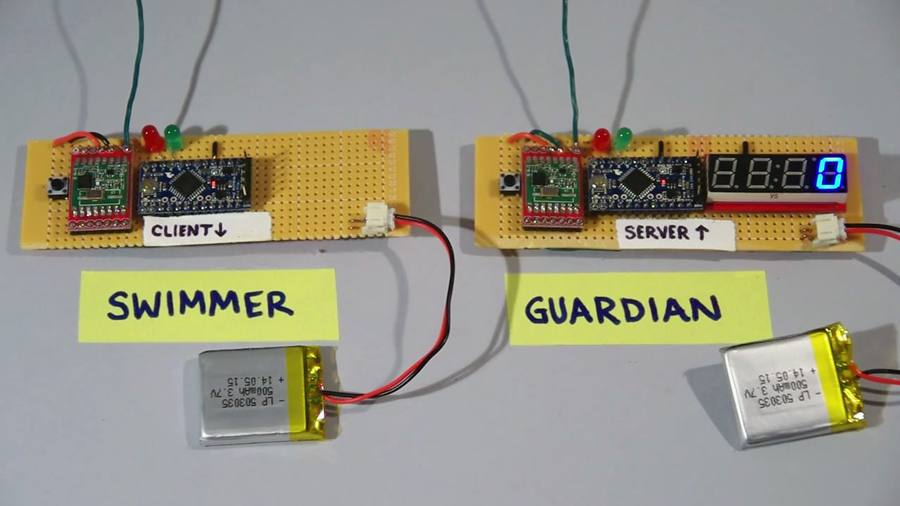
Armed with a preliminary Proof-of-Concept circuit built by a freelance engineer, and a pending patent, the team behind Ohana (originally called Swim-A-Sure) came to Tomorrow Lab looking to validate their idea for a safety distress-signaling device for swimmers. We engaged in a Product Discovery Phase Zero to both define the target market for such a device, as well as demonstrate reliable wireless transmission of a distress signal. This required balancing an appropriate mix of specific factors including: interference robustness through water, sufficient transmission distance, appropriate transmission data rate, and reasonable power requirements for a wearable device.
Tomorrow Lab engaged in an intensive six week scope of work that included a state of the art review, product innovation workshop, technical exploration, feature strategy, as well as preliminary industrial design, branding, logo, and package design. With the help of Engineer Matthew Epler, we fabricated a functioning works-like prototype that we tested in New York's East River. We created renderings of a looks-like brand package that show a school of waterproof wrist-worn wearables to allow guardians to monitor their kids more easily using tactile and visual queues.
Electrical Engineering
Industrial Design
Market & Patent Research
Packaging Design
Firmware Development
Prototyping
Branding & Logo Design
To learn more about the company behind Ohana, email: Clarke Carroll
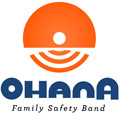
In the early stages of research, we reviewed existing products and patents to push the form factor into a viable product position. Through this research, we determined the most valuable solution would be to create a premium family safety product to allow children the freedom to swim safely, and their guardians the knowledge that they were more secure at a pool, on the beach, or by the lake - perhaps just out of sight, but not out of range in case they needed to call for help. By utilizing the idea of an adjustable wrist-sized wearable, we could build a product from waterproof materials to easily connect and transfer information about safety or distress to both parties. This transmission of data had to be universal in a way that no matter what swimming situation, either party could receive and reply to the message.
The hardest part of the concept development came from exploring scenarios in which the most common swimmer distress occurs. Seeing a swimmer in distress is not always possible when on a crowded beach, or on the other end of the pool. Noise is always an issue, whether from the water itself, or the people around you, yelling cannot always be heard. We came up with several solutions to this problem: transmit communication via vibration and LED signaling on both bands. This would allow each member of the family to stay within a designated safe distance from each other, for the band to acknowledge if the swimmer was approaching the borderline of safe range, and the guardian to call them back.
During a Discovery Phase Zero, we not only research and create a form factor, but we also begin to define the technology requirements through prototyping. The Safety Bands in this project required extensive electrical performance testing to maintain connectivity while pairing, and communication between each band. The transceiver's antenna needed sufficient range to work, and the PCB had to manage the vibration and LED indication.
However, we took advantage of a drop in signal strength (known as RSSI) in order to show a relative distance between the guardian and the swimmer.
In order to develop the waterproof wearable that could withstand a measurable distance to transmit the signal required a heavy technical exploration. We developed a set of parameters to understand the basic signal needs:-
1) To communicate distance when both in and out of range
-
2) To initiate visual aids utilizing LEDs
-
3) To initiate information via vibration
-
4) To understand when a Safety Band has been submerged, whether in distress or not, and initiate queues
-
5) To connect to an App to assist with pairing, additional queues and alerts, and status of swimmers and guardians
We tested a variety of antennas that could fit inside the wearable, but since this phase only required creating Proof-of-Concept, we were able to make a bulky, but working prototype. Once we built the electronics, wrote the code, and read the RSSI signal, we sourced waterproof boxes to house the PCBs and headed to the East River on a cold December day to test our assumptions. As you see in the video above, (filmed on a GoPro strapped to the prototype), we proved that we could truly achieve the objectives listed above, test the distance range, and performance under water submersion. The test taught us that many of our assumptions were correct, and that with carefully considered design changes during the next phase of work, we could make a market viable product.
To envision a successful brand for this product, we defined the message to convey, “A product for parents looking to give their kids the independence they beg for without putting them at risk. And allowing kids a chance to explore on their own but know they are safe from harm with Mom or Dad nearby.” With freedom and security both priorities, we brainstormed a variety of names and terms for family and came upon Ohana. As part of Hawaiian culture, ʻohana (oh-HA-na) means family in an extended sense of the term, including blood-related, adoptive or intentional. The concept emphasizes that families are bound together and members must cooperate and remember one another.
